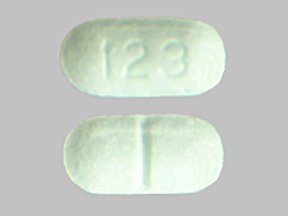Anti-Diarrheal Disease Interactions
There are 4 disease interactions with Anti-Diarrheal (loperamide).
Antiperistaltic agents (applies to Anti-Diarrheal) infectious diarrhea
Major Potential Hazard, High plausibility. Applicable conditions: Infectious Diarrhea/Enterocolitis/Gastroenteritis
The use of drugs with antiperistaltic activity (primarily antidiarrheal and antimuscarinic agents, but also antispasmodic agents such as dicyclomine or oxybutynin at high dosages) is contraindicated in patients with diarrhea due to pseudomembranous enterocolitis or enterotoxin-producing bacteria. These drugs may prolong and/or worsen diarrhea associated with organisms that invade the intestinal mucosa, such as toxigenic E. coli, Salmonella and Shigella, and pseudomembranous colitis due to broad-spectrum antibiotics. Other symptoms and complications such as fever, shedding of organisms and extraintestinal illness may also be increased or prolonged. In general, because antiperistaltic agents decrease gastrointestinal motility, they may delay the excretion of infective gastroenteric organisms or toxins and should be used cautiously in patients with any infectious diarrhea, particularly if accompanied by high fever or pus or blood in the stool. Some cough and cold and other combination products may occasionally include antimuscarinic agents for their drying effects and may, therefore, require careful selection when necessary.
Antiperistaltic agents (applies to Anti-Diarrheal) fluid/electrolytes
Moderate Potential Hazard, Moderate plausibility. Applicable conditions: Dehydration
Diarrhea can cause severe dehydration and electrolyte imbalance. Fluid accumulation within the GI track due to antiperistaltic-associated decrease in peristalsis can further aggravate dehydration and electrolyte imbalance. Antiperistaltic agents should be administered cautiously in patients with electrolyte imbalance and rehydration and electrolyte replacement should be initiated prior to initiation of therapy.
Antiperistaltic agents (applies to Anti-Diarrheal) hepatic/renal dysfunction
Moderate Potential Hazard, Moderate plausibility. Applicable conditions: Liver Disease
Therapy with antiperistaltic agents should be administered with extreme caution in patients with hepatorenal disease or abnormal liver enzymes. Antiperistaltic agents are metabolized by the liver (diphenoxylate to an active form) and primarily excreted in the feces. Hepatic coma can be precipitated.
Antiperistaltic agents (applies to Anti-Diarrheal) toxic megacolon
Moderate Potential Hazard, Moderate plausibility. Applicable conditions: Inflammatory Bowel Disease
Decreased intestinal motility and prolonged transit time have resulted in toxic megacolon in patients with acute ulcerative colitis. Paralytic ileus has also occurred. Antiperistaltic agent GI motility and prolongs transit time and therapy should be administered cautiously in these patients.
Switch to professional interaction data
Anti-Diarrheal drug interactions
There are 358 drug interactions with Anti-Diarrheal (loperamide).
Anti-Diarrheal alcohol/food interactions
There is 1 alcohol/food interaction with Anti-Diarrheal (loperamide).
More about Anti-Diarrheal (loperamide)
- Check interactions
- Compare alternatives
- Reviews (4)
- Drug images
- Latest FDA alerts (3)
- Side effects
- Dosage information
- During pregnancy
- Drug class: antidiarrheals
- Breastfeeding
Related treatment guides
Drug Interaction Classification
| Highly clinically significant. Avoid combinations; the risk of the interaction outweighs the benefit. | |
| Moderately clinically significant. Usually avoid combinations; use it only under special circumstances. | |
| Minimally clinically significant. Minimize risk; assess risk and consider an alternative drug, take steps to circumvent the interaction risk and/or institute a monitoring plan. | |
| No interaction information available. |
See also:
Further information
Always consult your healthcare provider to ensure the information displayed on this page applies to your personal circumstances.


